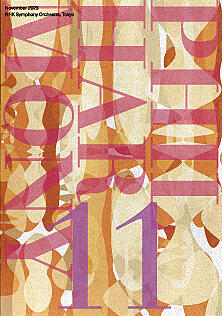- Home
- Concerts
- Subscription Concerts 2023-2024
- Program C
- No. 1995 Subscription (Program C)
No. 1995 Subscription (Program C)
NHK Hall
Google Map Seating Chart
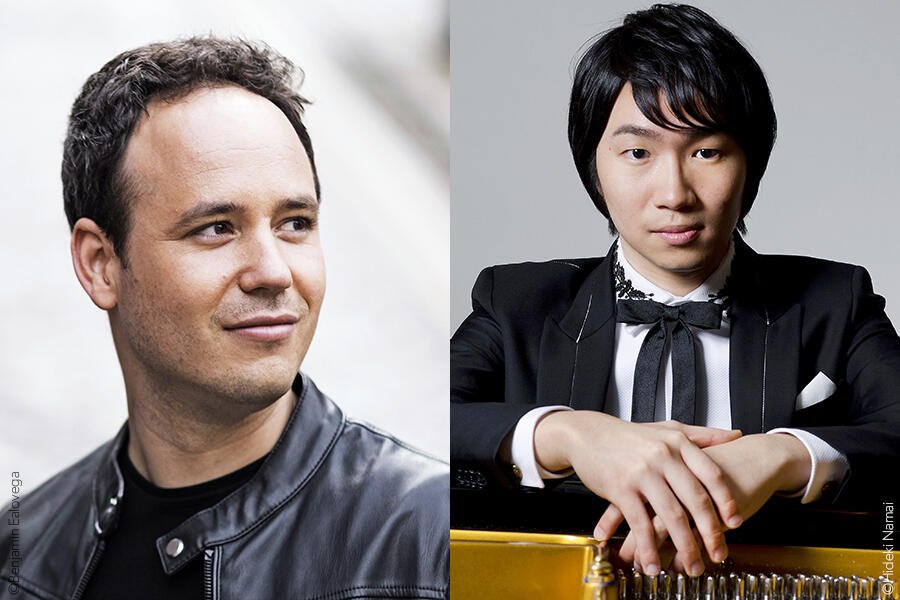
Program
Bartók / Hungarian Pictures
Hungarian composer and pianist Bartók entered in 1899 the Academy of Music in Budapest founded two decades earlier by Liszt (discussed below), one of the greatest musicians Hungary has ever produced. Bartók studied piano under István Thomán, Liszt’s pupil, and composition under János Koessler who also trained Kodály (mentioned later). After graduation in 1903, Bartók developed an interest in the folk music of the nation, which was coupled with a rising Hungarian nationalism of the time. It was from this period on that he steadily traveled with wax cylinders in his hand to collect and study the folk songs.
This research deeply inspired Bartók’s “classical” outputs in its all aspects. He sometimes used existing folk tunes as his compositional materials and at other times, created melodic, rhythmic or harmonic elements from scratch that sounded just like authentic folk music. And one of the apt illustrations is Hungarian Pictures (1931), the suite of five orchestral arrangements that he prepared from his piano works written in 1908-1911.
The opening pentatonic-scale (five-note-scale) theme on clarinet marks already the folksy mood of I An Evening in the Village, while II Bear Dance lets tuba and timpani suggest the animal entertainer stomping. The only piece scored for harp, slower-moving III Melody evokes scorings of Debussy who largely influenced the young Bartók. Following the humorously descriptive IV Slightly Tipsy, our composer quotes the Hungarian folk song Házasodik a tücsök (The Cricket is Getting Married) at V Swineherd's Dance.
[Kumiko Nishi]
Liszt / Hungarian Fantasy*
Forward-looking composer, legendary pianist, leading conductor and tireless teacher, Liszt represents the Austro-German Romanticism in music. Among his countless achievements is the double invention of the symphonic genre “tone poem” and the concert form “recital.” Moreover, his venturesome harmony exerted a great influence on Wagner (1813–1883), another Austro-German Romantic titan. On the other hand, Liszt, born in Doborján, Hungary (ruled then by Austrian Empire), was always proud of his roots while relocating his home in various places of Europe. In 1839 he made his first return to Hungary in sixteen years. He since visited the native soil many times (and even based in Budapest in his last years) communing with local traditional music and gypsy music that he infamously muddled up. That aside, he left us remarkable, nationalist works of which the most famous example is Hungarian Rhapsodies, a set of nineteen piano pieces on existing Hungarian and gypsy tunes.
An adaptation by the composer of Hungarian Rhapsody No. 14, Hungarian Fantasy (or Fantasia on Hungarian Folk Melodies) (1853) is a single-movement piano concerto. The principal theme, derived from the Hungarian folk song Magosan repül a daru (The Crane Flies High), is announced solemnly by horns and bassoons at the opening. The work sounds improvisational due to its constant changes in tempos and moods, and also its profusion of dazzling cadenzas where the pianist all alone is lavish playing trills (speedy alternations of two notes), runs (long fast passages) and glissandos (gliding on the keyboard).
[Kumiko Nishi]
Kodály / Háry János, suite
Hungarian composer and educator Kodály was also a forefather of ethnomusicology long before the term was created. As with his collaborator Bartók, the fieldwork of collecting folk songs as well as the scientific analysis and classification thereof brought richness and uniqueness to Kodály’s own creations.
Háry János: His Adventures from Nagyabony to the Vienna Burg (1928) is a Singspiel-style opera (with dialogues spoken) based on the amusing epic Az obsitos (The Veteran) by the Hungarian poet János Garay (1812–1853). Similar to Don Quixote, it features the old lovable boaster Háry who, in a tavern in the Hungarian village Nagyabony, diverts those present with his overly magnified accounts of his erstwhile feats as a soldier in the Austrian army.
Prepared by the composer for concert, the orchestral suite excellently condenses the comedy of the original opera without being faithful to the plot’s flow. I Prelude; the Fairy Tale Begins starts with an orchestral “sneeze” (Kodály’s expression), implying the stories Háry tells from now on are truthful according to a Hungarian superstition. On the Austrian border, Marie Louise (daughter of the Holy Roman Emperor Francis II and wife of Napoleon) falls in love with Háry so she invites him (and his sweetheart Orsze) to Vienna: scored for tubular bells, glockenspiel and celesta without strings, II Viennese Musical Clock describes the chiming bells and the mechanical dolls of the palace’s clock. III Song (evoking homesickness of Háry and Orsze) and V Intermezzo sound Hungarian by far because of the presence of the cimbalom, a flat trapezoidal instrument with metal strings hit by two sticks. Brassy IV The Battle and Defeat of Napoleon is from the scene where Háry, unaided, thrashes French forces with ease. Here we hear a takeoff on La Marseillaise followed by a comical funeral march. Háry returns in triumph to the Imperial palace in Vienna to meet with the Emperor. After the delusive flashy march (VI Entrance of the Emperor and His Court) ended by a mighty blow of the bass drum, Háry declines the Emperor’s proposal to give Marie Louise in marriage to him, and goes back to his homeland for Orsze.
[Kumiko Nishi]
*This concert will have a duration of 60 to 80 minutes without an interval.
[Encore]
Bartók / 3 Hungarian folksongs from the Csik district BB45b/Sz.35a
Piano: Tomoki Sakata
Artists
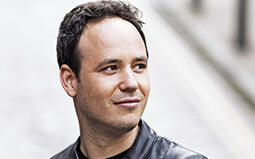 ConductorGergely Madaras
ConductorGergely Madaras
Conductor Gergely Madaras was born in Budapest in 1984. He has been Music Director of the Liège Royal Philharmonic of Belgium since September 2019. Until now, he has served as Music Director of the Orchestre Dijon Bourgogne in France and Principal Conductor of the Savaria Symphony Orchestra in Hungary, and has guest-conducted the BBC Symphony Orchestra, the BBC Philharmonic, the Orchestre Philharmonique de Radio France, the Orchester National de Lyon, La Scala Philharmonic Orchestra, Milan to name but a few.
He began his classical musical education studying the flute, violin and composition after learning folk music with the authentic Hungarian Gipsy and peasant musicians at the age of five. He graduated from the Flute Department of the Franz Liszt Academy of Music in Budapest and the Conducting Department of the University of Music and Performing Arts Vienna. He decided to become a conductor at the age of eleven when he had an opportunity to attend a rehearsal of the Budapest Festival Orchestra conducted by Georg Solti, and was mesmerized by the magic of conducting.
His repertoire ranges from the classical to Romantic periods, but on the other hand, he works with contemporary composers such as George Benjamin and Peter Eötvös. He has also established himself as an opera conductor by conducting at Dutch National Opera and the Grand Théâtre de Genève.
On this visit, he will take up music of his native Hungary. Since his childhood, he has been very familiar with music deeply rooted in his native land, therefore I am sure he will be presenting one of his most impressive performances to his audience. This is his first collaboration with the NHK Symphony Orchestra.
[Yoichi Iio, music journalist]
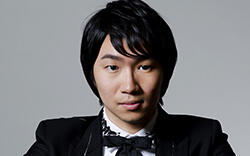 PianoTomoki Sakata*
PianoTomoki Sakata*
Tomoki Sakata is a Japanese pianist with a dazzling history in competitions including 1st Prize at the 2016 Franz Liszt International Piano Competition and 4th Prize at the 2021 Queen Elisabeth International Music Competition. He has been enthusiastically expanding his career as one of Japan’s leading young artists.
After studying music at the High School attached to Tokyo University of the Arts, and subsequently at the University, he completed his bachelor’s and master's degrees with honor at the Hannover University of Music and Performing Arts, and is currently studying at the soloist course of the university’s graduate school. Ever since he was admitted to the Lake Como Piano Academy, which has produced many world-renowned pianists, as the youngest student, Italy has become one of the places of his further studies. He learned under the tutelage of Paul Badura-Skoda for ten years, and studied composition with Masayuki Nagatomi and Hinoharu Matsumoto. He received the 2017 Yokohama Cultural Award for Encouragement of Arts and Culture, and the 32nd Idemitsu Music Award in 2023.
He has a reputation as an intelligent virtuoso, placing his main repertoire on the Romantic period composers such as Liszt and Chopin, and at the same time, pouring energy into discovering unknown works. I am sure he will delight us with his brilliant technique in playing Liszt, his favorite composer. This is his second appearance with the NHK Symphony Orchestra after his first collaboration in April 2021.
[Yoichi Iio, music journalist]
Pre-concert Chamber Music Performance
Pre-concert Chamber Music Performance
Program:Veress / Sonatina for Violin and Cello ー 3rd Mov.
Kodály / Duo for Violin and Cello Op. 7 ー 1st Mov.
Artists
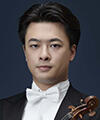
Sunao Goko
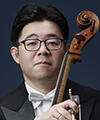
Hiroshi Miyasaka
Download
Ticket
Program C
No. 1995 Subscription (Program C)
NHK Hall
Google Map
Seating Chart
Single Tickets Release Date
Pre-sales for Subscribers:Thursday, July 27, 2023
*about subscribers
Sale to General Public:Sunday, July 30, 2023
Price
| S | A | B | C | D | E | |
|---|---|---|---|---|---|---|
| Ordinary Ticket | 7,600 | 6,700 | 5,300 | 4,300 | 3,300 | 1,600 |
| Youth Ticket | 3,500 | 3,000 | 2,400 | 1,900 | 1,400 | 800 |
Seating chart Enlarge Print PDF
*tax included
*Subscribers receive a 10% discount (Available at NHKSO WEB Ticket and N-Kyo Guide)
*For wheelchair-accessible seats, please refer to the N-Kyo Guide
*Repertoire, conductor, soloists and program order are subject to change without notice.
*Pre-school children are not allowed in the concert hall
Youth Tickets
Youth Tickets are great options for those of 25 years old and younger
Subscription tickets
Release Date
ANNUAL SUBSCRIPTION TICKETS/
SEASONAL SUBSCRIPTION TICKETS (AUTUMN)
Mon., July 17, 2023 10:00am
[For Subscribers: Sun., July 9, 2023 10:00am]
For further information and
subscription application
Other Ticket Agents
Broadcast
 NHK-FMNo. 1996 Subscription (Program C)
NHK-FMNo. 1996 Subscription (Program C)
Friday, Nov 10, 2023 7:30PM - 9:10PM
Program:
Bartók / Hungarian Pictures
Liszt / Hungarian Fantasy*
Kodály / Háry János, suite
*This concert will have a duration of 60 to 80 minutes without an interval.
Conductor:Gergely Madaras
Piano:Tomoki Sakata*
Recorded:November 10, 2023 NHK Hall
*Repertoire, conductor, soloists and program order are subject to change without notice.
*Pre-school children are not allowed in the concert hall

